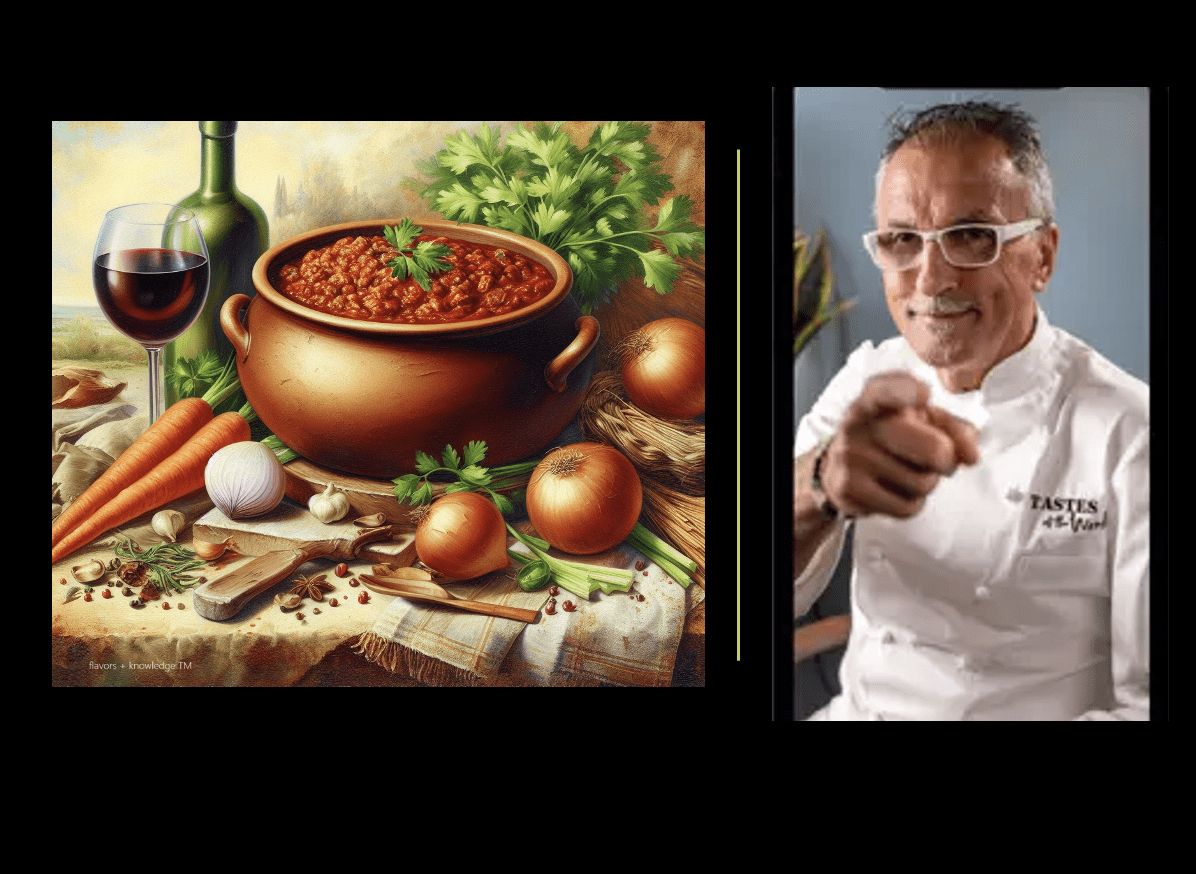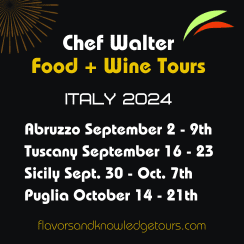Search Posts
Recent Posts
- CVS acquires Hella Health to offer seniors simplified online Medicare shopping May 14, 2024
- RI violates civil rights of children with behavioral health disabilities. “An utter void in crisis services” May 14, 2024
- Rhode Island Weather for May 14, 2024 – John Donnelly May 14, 2024
- Be prepared for harmful algae blooms this summer May 14, 2024
- ART! Flower Power at Jessica Hagen Fine Art + Design, Newport May 14, 2024
Categories
Subscribe!
Thanks for subscribing! Please check your email for further instructions.

Ask Chef Walter: Ragu’ alla Bolognese. 11 mistakes to avoid – Chef Walter Potenza
by Executive Chef Walter Potenza
Hello friends of RINT:
Our loyal subscriber, Timothy H. from Fairhope, Alabama, asked about the Ragu’ alla Bolognese and the mistakes to avoid. Here you have it, Tim!
Bolognese sauce, also known as Ragù alla Bolognese, is a classic Italian sauce that originated in the city of Bologna in the Emilia-Romagna region of northern Italy. The sauce is a rich, savory meat sauce that is typically served with pasta, significantly thicker varieties like tagliatelle.
The exact origins of Bolognese sauce are a subject of debate, and there are several theories about its creation. However, the most widely accepted version is that it developed in the late 18th century in Bologna. The sauce was initially associated with the local aristocracy. It was a specialty served in the wealthy households of the region.
The first documented recipe was published in Pellegrino Artusi’s cookbook and Italian food bible, “La Scienza in Cucina e l’Arte di Mangiar Bene,” 1891.
(The science in the kitchen and the art of eating well.)
Artusi’s recipe included minced meat, onions, and a soffritto of vegetables, cooked with white wine and milk. Tomatoes were not included in the original recipe.
Over time, the recipe evolved, and tomatoes became a more common ingredient in the sauce. However, it’s essential to note that authentic Bolognese is not a heavily tomato-based sauce; instead, it emphasizes the rich flavors of the meats and the soffritto.
In 1982, the Bolognese delegation of the Accademia Italiana della Cucina deposited the official recipe of Bolognese sauce with the Bologna Chamber of Commerce. The “Authentic Ragù Bolognese Recipe” recipe outlines the precise ingredients and proportions needed to create an official, certified Bolognese sauce.
Today, Bolognese sauce has become popular worldwide, and various adaptations exist. However, true enthusiasts of Italian cuisine often emphasize the importance of adhering to the traditional recipe for an authentic taste of this classic sauce.
Making a classic Bolognese sauce requires attention to detail and patience.
Here are some common mistakes to avoid:
- Rushing the Cooking Process:
- Bolognese sauce benefits from slow cooking. Avoid rushing the process if possible, and let it simmer on low heat to allow flavors to meld and develop. A good ragu’ takes at least 3 hours of prep and cooking time.
- Using the Wrong Meat:
- Authentic Bolognese uses a mix of ground meats, typically beef, veal, and pork. Using only one type of meat might result in a less prosperous and flavorful sauce. I recommend the beef to have an 8/20 ratio.
- Skipping the Soffritto:
- The soffritto (a mixture of finely chopped onions, carrots, and celery) is the flavor base for Bolognese. Skipping or rushing this step can impact your sauce’s flavor depth. Cook the soffitto for at least 15 minutes, and release all the nutrients in the vegetables.
- Not Using Milk:
- Traditional Ragu’ Bolognese recipes include adding milk, which helps tenderize the meat and add creaminess to the sauce. Skipping this ingredient may result in a less prosperous and textured sauce.
- Overloading with Tomatoes:
- Bolognese is not a tomato-heavy sauce. Avoid using too much tomato sauce or paste; the sauce should balance meat and vegetable flavors. The actual color is closer to a brownish-reddish.
- Using the Wrong Pasta:
- Bolognese is best paired with flat pasta like tagliatelle or pappardelle, which can hold the rich sauce. Using a pasta type that’s too thin or delicate may not complement the hearty nature of the sauce.
- Neglecting Wine:
- Authentic Bolognese often includes the addition of an excellent red wine. The wine, especially of good quality, adds depth and complexity to the sauce. However, be cautious not to use too much, as you don’t want the sauce to taste overly of wine.
- Neglecting Seasoning:
- Taste frequently and adjust the seasoning throughout the cooking process. Bolognese should be well-seasoned with salt and pepper, but be cautious not to over-salt. Hot pepper or chili is avoided. Personal preference.
- Using Too Much Garlic:
- The original formula does not include garlic. However, if you must have it, remember that while garlic can add flavor, using too much can overpower the dish. Be conservative with your garlic usage to maintain a balanced taste. Do not chop or mince the garlic. Crush it, leaving the outer skin on, and discard it after cooking.
- Not Letting it Rest:
- After cooking, allow the Bolognese to rest for a while before serving. The flavors developed will meld together, resulting in a more harmonious and fragrant taste.
- Not Grating Nutmeg Fresh:
- Use freshly grated nutmeg for a sophisticated flavor if your recipe includes nutmeg. Pre-ground nutmeg loses its aromatic qualities quickly. If you can, grind it fresh at the end of the cooking process before resting.
The bottom line!
Remember, Bolognese is a dish that benefits from attention to detail and patience. Adjustments to ingredients and cooking time can significantly impact the final flavor, so take your time and enjoy the process.

HERE: Chef Walter Potenza – go to “contact” to send your question!

HERE: Chef Walters Podcasts
___

Meet Chef Walter!
There is a constant, recognizable thread in the career of Walter Potenza to elevate the level of Italian culinary culture in the United States. Besides his unquestionable culinary talent and winning business perspective, Chef Walter has been a relentless educator with passion and knowledge who defeats stereotypes. His life, career, and values are a model, an example to follow by any chef of Italian gastronomy working outside Italy.
Chef Walter appears regularly on National and International Networks such as Food Network, ABC, CBS, NBC, RAI, FOX, and Publications such as NY. Times, Washington Post, Wall Street Journal, Food & Wine, Saveur, Gourmet, and several Italian media outlets. And now – RINewsToday!
Travel with Chef Walter!

Chef Walters Cooking School, Cranston, Rhode Island. (Book a class, or purchase a certificate)
